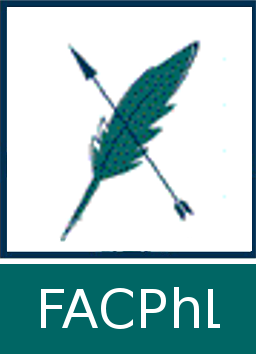Recherches sur certains insignes patriciens auxquels la tradition confère une origine étrusque. Le cas du faisceau de licteur, de la sella curulis et du lituus augural
Fraiture, Timothée 
Promotor(s) :
Berthelet, Yann 
Date of defense : 18-Jan-2021/23-Jan-2021 • Permalink : http://hdl.handle.net/2268.2/11086
Details
| Title : | Recherches sur certains insignes patriciens auxquels la tradition confère une origine étrusque. Le cas du faisceau de licteur, de la sella curulis et du lituus augural |
| Translated title : | [fr] Research on certain patrician insignia to which the tradition confers an Etruscan origin. Fascis, sella curulis and lituus |
| Author : | Fraiture, Timothée 
|
| Date of defense : | 18-Jan-2021/23-Jan-2021 |
| Advisor(s) : | Berthelet, Yann 
|
| Committee's member(s) : | Morard, Thomas 
Rochette, Bruno 
|
| Language : | French |
| Number of pages : | 220 pages volume de texte, 149 volume annexe |
| Keywords : | [fr] Insignes de pouvoir, origine, Etrurie |
| Discipline(s) : | Arts & humanities > History |
| Target public : | Researchers Professionals of domain Student General public |
| Institution(s) : | Université de Liège, Liège, Belgique |
| Degree: | Master en histoire, à finalité approfondie |
| Faculty: | Master thesis of the Faculté de Philosophie et Lettres |
Abstract
[fr] The Greco-Roman literary tradition attributes Etruscan origins to the Roman insignia imperii, an evidence supported by numerous modern works. The question whether these insignia were influenced or transmitted by Etruscans remains mostly based on Isidoro Falchi’s discovery in 1897 of a double-headed fasces in Vetulonia (circa 630 BC). Silius Italicus’ testimony served as a basis for scientific theories which assumed too promptly a heavy Etruscan legacy. The interest of this unique material source, which has caused historical and archaeological confusion, deserves new research, as well as joint research with two other insignia: the sella curulis and the augural lituus. Due to its age, Murlo's "theon agora" frieze (circa 600-575 BC) enables the creation of a solid basis for the theory and justifies a joint study of these three insignia. A periodization of the insignia of power recently proposed by Thierry Piel (PIEL 2000 and 2002) in his study will be taken into account. The purpose of this study is to reconsider previously put forward hypotheses and to re-evaluate a supposed Etruscan influence or transmission within the framework of Etrusco-Roman relations and inter-ethnic mobilities.
File(s)
Document(s)

 Fraiture Timothée mémoire Final.pdf
Fraiture Timothée mémoire Final.pdf
Description: -
Size: 2.17 MB
Format: Adobe PDF

 Erratum_Fraiture Timothée mémoire Final.pdf
Erratum_Fraiture Timothée mémoire Final.pdf
Description: -
Size: 593.14 kB
Format: Adobe PDF
Annexe(s)

 Fraiture Timothée mémoire catalogue et corpus de source.pdf
Fraiture Timothée mémoire catalogue et corpus de source.pdf
Description: -
Size: 7.57 MB
Format: Adobe PDF

 Fraiture Timothée mémoire tab.1 chronologique.pdf
Fraiture Timothée mémoire tab.1 chronologique.pdf
Description: -
Size: 169.73 kB
Format: Adobe PDF

 Fraiture Timothée mémoire tab.2 faisceau.pdf
Fraiture Timothée mémoire tab.2 faisceau.pdf
Description: -
Size: 108.5 kB
Format: Adobe PDF

 Fraiture Timothée mémoire tab.3 pliant.pdf
Fraiture Timothée mémoire tab.3 pliant.pdf
Description: -
Size: 78.5 kB
Format: Adobe PDF

 Fraiture Timothée mémoire, tab.4 lituus.pdf
Fraiture Timothée mémoire, tab.4 lituus.pdf
Description: -
Size: 75.03 kB
Format: Adobe PDF
Cite this master thesis
The University of Liège does not guarantee the scientific quality of these students' works or the accuracy of all the information they contain.


 Master Thesis Online
Master Thesis Online




